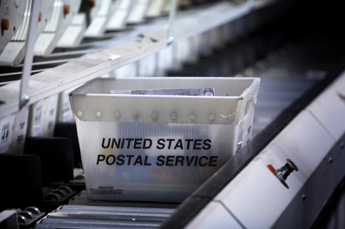Investing
How Did the U.S. Postal Service Actually Add 4,500 Jobs in February?
Published:
Last Updated:
There are always some interesting factoids in various industries and sectors in each monthly breakdown of the Employment Situation from the Bureau of Labor Statistics. Friday’s BLS report was a much stronger than expected gain in both nonfarm payrolls at 236,000 and total private sector payrolls of 246,000. It almost sounded like good news that the “government” sector jobs fell by 10,000. Almost.
While housing construction added more than 17,000 jobs in February, one surprise boost came from some 20,800 jobs added in the motion picture and sound recording industries. Those $12 movie tickets must help a lot. Another 16,000 of the added payrolls came from temporary help services. The one figure that stood out above and beyond any rational explanation was that the good old U.S. Postal Service somehow added about 4,500 more workers.
The U.S. Postal Service continues to lose money as it is bleeding cash to keep paying retiree pensions and benefits. So can someone please manage to explain how the USPS added jobs at a time that Saturdays are being dumped for delivery days? The USPS had some 603,100 workers in January and somehow rose to 607,600 workers on a seasonally adjusted basis in February. A gain of 4,500 jobs might not sound like much to a government pencil pusher, but it sure does to those of us taxpayers who do not really believe that taxpayers aren’t ultimately on the hook for the “independently funded” Postal Service.
While the USPS reported a quarterly loss of $1.3 billion back in early February, the one area of growth was a 4.7% growth in Shipping and Packaging. No wonder the Postal Service is going to continue package deliveries on Saturdays. First class mail continued to decline and the Postal Service’s effort to cut first class mail delivery on Saturdays may save as much as $2 billion. So, this begs a couple questions. Does the Post Office need more workers to handle more and more catalog mailings or junk mail? Didn’t all the partisan mail-outs for donations end in November as well?
The USPS loss announcement in February also said that the first quarter is traditionally the Postal Service’s strongest financial quarter due to the holiday mailing and shipping season. Maybe that explains the hirings with a lag of some sort. The problem there is that the first quarter is actually the fourth calendar quarter and it ends on December 31 and the added payrolls were for February.
Needless to say, we wanted an answer of how the payrolls at the USPS grew by 4,500 people in February. So, we placed two calls to spokespeople and are awaiting an answer about how the 4,500 jobs were added. We did speak with two USPS contacts on Friday, but so far the explanation remains unanswered. If we get a response we will update this article.
This situation is one true head-scratcher at a time that budgets are supposedly tightening up. As we have no way to know what the boost is from until an answer is offered up, we chose a theoretical $30,000 per year for each of these 4,500 positions knowing that it may be higher. That comes to an extra $135 million per year from a group that is losing money. This $135 million figure may even be much higher when you consider insurance, pensions, and other benefits. It also does not include the added expenses that come with each new hire.
Saving a theoretical $135 million here and there is not going to save the Postal Service, and it is not going to save the out-of-control deficit spending that Washington D.C. is addicted to. That being said, a few hundred or a thousand instances of this sort of savings is what it will take to get government spending in line with real budgeting. Of course, the government hasn’t operated on a budget for years now.
Thank you for reading! Have some feedback for us?
Contact the 24/7 Wall St. editorial team.